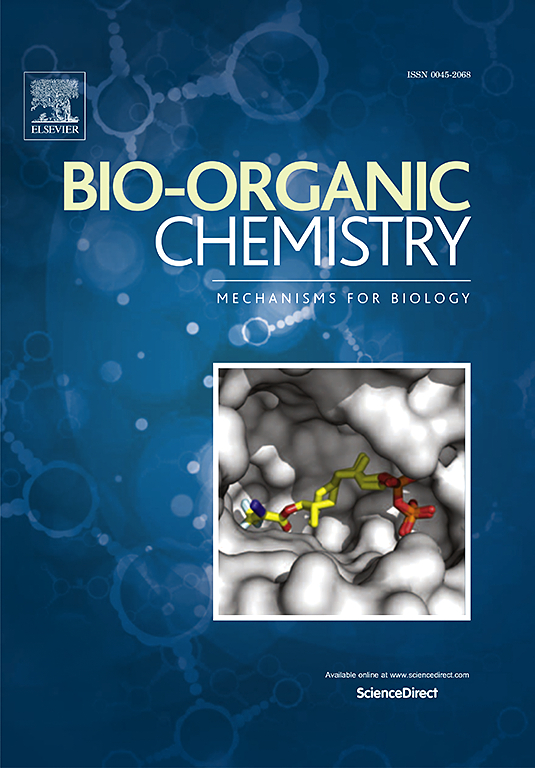N-glycosylation-modifications-driven conformational dynamics attenuate substrate inhibition of d-lactonohydrolase
IF 4.5
2区 医学
Q1 BIOCHEMISTRY & MOLECULAR BIOLOGY
引用次数: 0
Abstract
Achieving enzyme catalysis at high substrate concentrations is a substantial challenge in industrial biocatalysis, and the role of glycosylation in post-translational modifications that modulate enzyme substrate inhibition remains poorly understood. This study provides insights into the role of N-glycosylation in substrate inhibition by comparing the catalytic properties of d-lactonohydrolase (d-Lac) derived from Fusarium moniliforme expressed in prokaryotic and eukaryotic hosts. Experimental evidence indicates that recombinant d-Lac expressed in Pichia pastoris (PpLac-WT) exhibits higher hydrolysis rates at a substrate concentration of 400 g/L, with reduced substrate inhibition and enhanced stability compared to the recombinant d-Lac expressed in Escherichia coli (EcLac-WT). Mutant PpLac-M1 achieves a conversion rate of 40 % at a substrate concentration of 400 g/L, with a space–time yield of d-pantoic acid reaching 91.1 g/L/h. Proteomics analysis reveals that residues N29 and N278, located approximately 10–20 Å from the active site undergo N-glycosylation in PpLac-WT. Using microsecond-scale molecular dynamics simulations and Markov state models, we elucidate the effects of glycosylation on the conformational flexibility of two key loops at the entrance of the binding pocket. Specifically, the loops in PpLac-WT can transition between open and closed states, whereas those in EcLac-WT tend to remain open. In high substrate concentration conditions, the open state causes congestion, leading to substrate inhibition. Shortest-path map analysis confirms that substrate entry is dynamically controlled by residue N29 on the loops surrounding the active site. Our findings enhance the understanding of the effects of glycosylation on enzyme conformational dynamics and provide insights into mitigating inhibition at high substrate concentrations.

n-糖基化修饰驱动的构象动力学减弱了底物对d-乳酸水解酶的抑制作用。
在高底物浓度下实现酶催化是工业生物催化的一个重大挑战,并且糖基化在调节酶底物抑制的翻译后修饰中的作用仍然知之甚少。本研究通过比较镰刀菌在原核和真核宿主中表达的d-乳酸水解酶(d-Lac)的催化性能,深入了解n -糖基化在底物抑制中的作用。实验证据表明,在毕赤酵母中表达的重组d-Lac (pplaca - wt)在400 g/L底物浓度下表现出更高的水解率,与在大肠杆菌中表达的重组d-Lac (EcLac-WT)相比,底物抑制作用降低,稳定性增强。突变体pplac1 - m1在底物浓度为400 g/L时转化率达到40%,d-泛酸的时空产率达到91.1 g/L/h。蛋白质组学分析显示,位于活性位点约10-20 Å处的残基N29和N278在pplaca - wt中经历了n糖基化。利用微秒尺度的分子动力学模拟和马尔可夫状态模型,我们阐明了糖基化对结合袋入口两个键环构象灵活性的影响。具体来说,placa - wt中的环可以在打开和关闭状态之间转换,而EcLac-WT中的环则倾向于保持打开状态。在高底物浓度条件下,开放状态引起堵塞,导致底物抑制。最短路径图分析证实,底物进入是由活性位点周围环上的残基N29动态控制的。我们的研究结果增强了对糖基化对酶构象动力学影响的理解,并为在高底物浓度下减轻抑制提供了见解。
本文章由计算机程序翻译,如有差异,请以英文原文为准。
求助全文
约1分钟内获得全文
求助全文
来源期刊

Bioorganic Chemistry
生物-生化与分子生物学
CiteScore
9.70
自引率
3.90%
发文量
679
审稿时长
31 days
期刊介绍:
Bioorganic Chemistry publishes research that addresses biological questions at the molecular level, using organic chemistry and principles of physical organic chemistry. The scope of the journal covers a range of topics at the organic chemistry-biology interface, including: enzyme catalysis, biotransformation and enzyme inhibition; nucleic acids chemistry; medicinal chemistry; natural product chemistry, natural product synthesis and natural product biosynthesis; antimicrobial agents; lipid and peptide chemistry; biophysical chemistry; biological probes; bio-orthogonal chemistry and biomimetic chemistry.
For manuscripts dealing with synthetic bioactive compounds, the Journal requires that the molecular target of the compounds described must be known, and must be demonstrated experimentally in the manuscript. For studies involving natural products, if the molecular target is unknown, some data beyond simple cell-based toxicity studies to provide insight into the mechanism of action is required. Studies supported by molecular docking are welcome, but must be supported by experimental data. The Journal does not consider manuscripts that are purely theoretical or computational in nature.
The Journal publishes regular articles, short communications and reviews. Reviews are normally invited by Editors or Editorial Board members. Authors of unsolicited reviews should first contact an Editor or Editorial Board member to determine whether the proposed article is within the scope of the Journal.
 求助内容:
求助内容: 应助结果提醒方式:
应助结果提醒方式:


